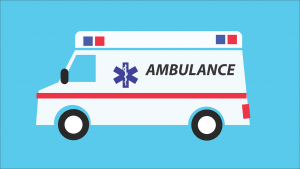One in five Americans have received a surprise medical bill from an emergency department, and another one in five have gotten unexpected bills from non-emergency hospital stays. Surprise medical bills have been a huge problem for Americans, but on January 1, 2022, the No Surprises Act took effect. This law establishes federal protections against most surprise medical bills that come after you receive out-of-network care during a hospital visit. Find out what the No Surprises Act means for you.
Surprise Bills

In some cases, when you receive medical treatment (especially in an emergency situation), you will be unable to choose the provider who treats you, and so you end up unexpectedly receiving care from an out-of-network provider. Or, you might visit an in-network facility, but unknowingly see an out-of-network provider during your stay there.
Your insurance company will often pay some amount to the out-of-network provider, but typically less than the provider’s list price for the services. In most cases, the provider who treated you will then “balance bill” you for the difference between their list price and the insurer’s payment. In other cases, your insurer will offer little to no coverage of your unexpected out-of-network care. And in both of these scenarios, you’ll end up getting an unexpected bill, known as a “surprise” medical bill.
Getting a surprise medical bill in the mail can be a source of a lot of anxiety for many people. Two out of three Americans say they worry about being able to afford unexpected medical bills, and nearly half can’t afford to pay surprise bills in full.
Ending Surprise Bills
But the No Surprises Act will now make surprise medical bills a thing of the past. The law bans:
- Surprise bills for most emergency services, even if you get them out-of-network and without approval beforehand.
- Out-of-network cost-sharing (like coinsurance or copayments) for most emergency and some non-emergency services, so you can’t be charged more than in-network cost-sharing for these services.
- Out-of-network charges and balance bills for certain additional services (like anesthesiology or radiology) administered by out-of-network providers as part of a patient’s visit to an in-network facility.
In addition, according to the law, you can’t be asked to waive your protections against balance billing in emergencies or for certain non-emergency services, such as ancillary services (anesthesia, pathology, radiology) associated with emergency care, or diagnostic services such as radiology or labs. It will be up to medical providers and insurers to identify which bills are subject to the Act.
“This law puts an end to the practice of charging patients exorbitant bills for unexpected, out-of-network care,” Sen. Patty Murray, chair of the Senate Health, Education, Labor, and Pensions Committee, said.
What the No Surprises Act Does Not Cover
Unfortunately, the bill does not ban all surprise and out-of-network bills. It will exclude:
- Ambulance rides– The law applies to air ambulances, but not ground ones.
- Certain facilities– The law applies to hospitals and emergency departments, but not to other facilities, such as urgent care facilities.
If you are unsure if a bill you received in the mail falls under the No Surprises Act, or if you have general questions about the new law, contact the newly established No Surprises Help Desk at 800-985-3059.
Find A Better Health Plan
Unfortunately, sometimes you will find that your health insurance plan doesn’t cover everything you need it to, leaving you with a big bill that you will have to pay out-of-pocket. If your plan isn’t adequate for your needs, it’s time to find a plan that is, so you can save as much money as possible. If you’re shopping for a plan, your best bet is to speak to a licensed EZ agent. Our agents work with the top-rated insurance companies in the nation, so we can compare plans in minutes. We will not only find a plan that has all the benefits you’re looking for, but we will also make sure the plan fits your budget. To get free instant quotes, simply enter your zip code in the bar above, or to speak to a local agent, call 888-350-1890. No obligation.












